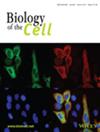NSUN6 Maintains BMPER Stability in an m5C-Dependent Manner to Suppress Cell Proliferation and Migration in Hepatocellular Carcinoma
Abstract
Background
The expression of Nop2/Sun domain family member 6 (NSUN6), an RNA m5C methyltransferase, is correlated with the prognosis of various cancers. However, its role in the progression of hepatocellular carcinoma (HCC) remains elusive.
Methods
The expression of NSUN6 was analyzed using the TCGA-HCC cohort, as well as through quantitative real-time reverse transcription polymerase chain reaction (qRT-PCR) and western blotting in tumor tissues from HCC patients and various HCC cell lines. Moreover, its biological functions were detected using cell counting kit 8 (CCK8), colony formation, 5-ethynyl-2′-deoxyuridine (EdU), wound healing, and transwell invasion assays in vitro, as well as in an HCC patient-derived xenograft (PDX) mouse model in vivo. The molecular mechanism underlying NSUN6 was explored using methylated RNA immunoprecipitation sequencing (MeRIP-seq), double luciferase reporter gene assay, actinomycin-D assay, and rescue experiments in SNU449 cell lines.
Results
The expression level of NSUN6 was significantly decreased in the TCGA-HCC cohort, tumor tissues of HCC patients and HCC cell lines. NSUN6 overexpression markedly inhibited the proliferative and migratory abilities of HCC cells in the PDX mouse model. Additionally, BMPER was identified as a downstream target of NSUN6, while NSUN6 could stabilize BMPER expression in an m5C-dependent manner. Finally, BMPER knockdown reversed the positive effects of NSUN6 in suppressing HCC progression.
Conclusion
This study elucidated the inhibitory effect of NSUN6 overexpression in HCC development, with BMPER identified as a downstream target of NSUN6. NSUN6 regulates BMPER expression in an m5C-dependent manner, thereby influencing HCC progression. Overall, these results suggest that the NSUN6/BMPER axis may serve as a potential therapeutic target for HCC.


 求助内容:
求助内容: 应助结果提醒方式:
应助结果提醒方式:


